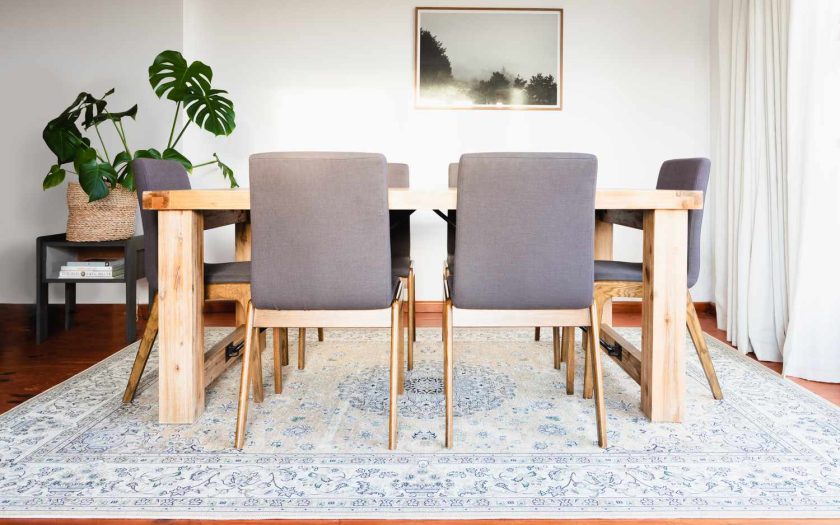When it comes to creating a welcoming and stylish dining room, one often overlooked element is the rug. A well-chosen dining room rug can add warmth, texture, and even protect your floors, all while tying the entire room together. But with so many options available, how do you select the best rug for your dining space? Here’s a guide to help you make the right choice.
1. Consider the Rug Size
The size of your dining room rug is crucial. A rug that’s too small can make the room feel disjointed, while one that’s too large can overwhelm the space. The general rule of thumb is to ensure the rug extends at least 24 inches beyond the edges of your dining table on all sides. This allows enough room for chairs to be pulled out without slipping off the rug. For most dining tables, an 8×10 or 9×12 rug works well.
2. Think About Material
The material of your dining room rug will influence both its durability and comfort. Here are some popular options:
- Wool: A classic choice, wool is soft, durable, and naturally stain-resistant. It’s an excellent option for high-traffic areas like dining rooms.
- Synthetic Fibers (e.g., polypropylene, nylon): These materials are affordable, durable, and easy to clean, making them great for families with children or pets.
- Natural Fibers (e.g., jute, sisal): These are eco-friendly options that add a textured, organic feel to your dining room. However, they may not be as soft underfoot as wool or synthetic rugs.
3. Choose the Right Shape
The shape of your rug should complement the shape of your dining table. For a rectangular table, a rectangular rug is usually the best fit. If you have a round dining table, a round rug can create a harmonious look. Oval rugs work well with oval tables or can be a unique pairing with rectangular tables.
4. Pick a Color and Pattern
When selecting a color and pattern, consider the overall color scheme of your dining room. If your dining room has a lot of bold colors, a neutral or solid-colored rug can balance the space. Conversely, if your room is more subdued, a patterned rug can add visual interest. Patterns can also be practical, as they help conceal spills and stains.
5. Focus on Durability and Maintenance
Dining rooms are prone to spills, so it’s essential to choose a rug that’s easy to clean and maintain. Look for rugs that are stain-resistant or treated to resist spills. Some rugs are also machine-washable, making them a convenient choice for busy households.
6. Comfort Underfoot
While durability is important, you also want a rug that feels good underfoot. Consider the pile height—the thickness of the rug. A low-pile rug is easier to clean and allows chairs to move smoothly. However, if you prefer a softer feel, a medium-pile rug might be more to your liking.
7. Budget Considerations
Dining room rugs come in a wide range of prices. Set a budget before you start shopping, and remember that a good-quality rug is an investment. It’s worth spending a little more on a rug that will last for years and withstand the wear and tear of daily use.
8. Don’t Forget the Rug Pad
A rug pad is essential for keeping your rug in place and providing additional cushioning. It also helps extend the life of your rug by preventing the fibers from being crushed.
Final Thoughts
Selecting the perfect dining room rug involves considering size, material, shape, color, durability, and comfort. By taking the time to choose wisely, you can find a rug that not only enhances your dining space but also stands up to the demands of daily life. Whether you prefer a traditional wool rug, a modern synthetic option, or a natural fiber piece, the right rug will bring warmth and style to your dining room for years to come. https://sayrug.com/search/?q=best+dining+room+rugs
